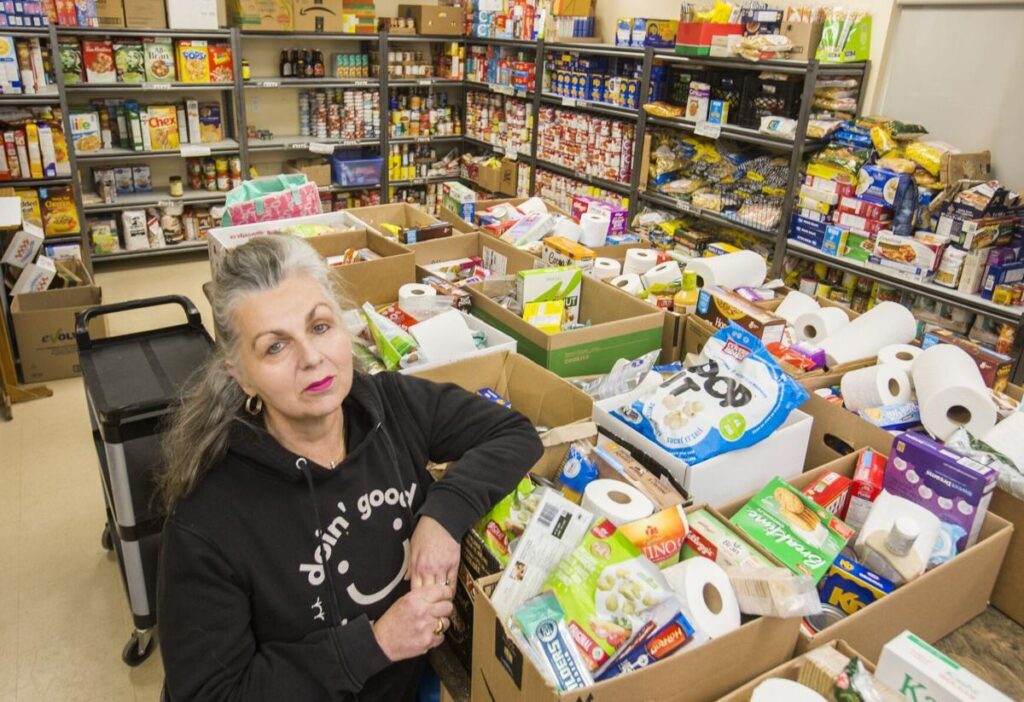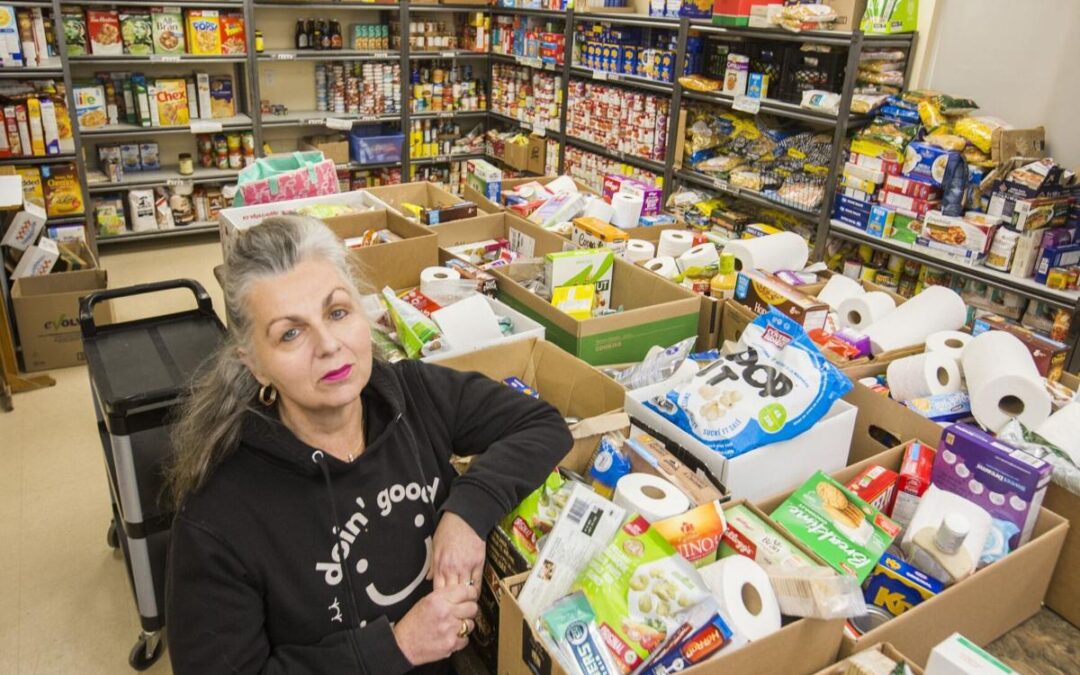Food Banks Canada study argues shifting from the current Market Basket Measure to a Material Deprivation Index can better identify poverty and its impacts.
Updated Sept. 11, 2024 at 7:03 p.m.
Aug. 12, 2024

hristine Clark LaFleur, Port Cares chief executive officer, advocates for use of a Material Deprivation Index which better gauges poverty and can help tackle issues related to it. Bob Tymczyszyn St. Catharines Standard

A novel approach to poverty is being examined to better help people struggling to make ends meet.
A report, “Poverty in Canada Through a Deprivation Lens,” released by Food Banks Canada sheds light on poverty in Canada and argues shifting from the current standard Market Basket Measure (MBM) to a Material Deprivation Index (MDI) can better identify poverty and its impacts.
An MDI has been used in Europe for decades to determine tangible and intangible aspects of poverty and is growing in popularity in Canada among poverty experts and advocates. The idea is also being embraced in Niagara.
According to Canadian Mortgage and Housing Corp. statistics from 2021, the median after-tax income for Ontario families is just over $69,000, compared to the average of $79,000, which could result in more people depending on assistance programs here.
For Brock University Prof. Joanne Heritz, what the MDI does is provide a better understanding of people’s needs, compared to the MBM which calculates the cost of a specific basket of goods and services, a representation of the basic standard of living for a family of four in Canada.
“What this (MDI) is doing is it’s looking at people’s lifestyles,” she said.
“We know there’s many people one crisis away from not making rent or getting groceries or something comes up making it difficult to respond to a crisis because they don’t have the income.”
Food Banks Canada, in the report, said despite the MBM being a basket of basic necessities, “they are not basic necessities in the sense of allowing a person to survive for another day.”
Rather it is a current living standard and is meant to “reflect a modest standard of living for the reference family.”
The report looked at 11 deprivation items most common to people struggling to get by. Among them were transportation, protein (or vegetarian equivalent), bills, clothing, dental care, transportation and unexpected expenses.
Results showed more than 37 per cent of people were deprived of one or more items, while 62 per cent stated no deprivation items existed for them.
When the MDI is broken down by province, Ontario ranked highest for respondents unable to afford two or more items at 27.6 per cent and three or more items at 17 per cent.
The MBM scored at 7.7 per cent in Ontario, a contrast in how the two systems define poverty.
Despite housing costs not being listed as a deprivation item, Heritz said if people were not deprived before current housing prices spiked, they most certainly could be now.
“We know there’s an increased number of people dependent on food banks,” she said.
“We know there’s other indicators they wouldn’t meet that those material deprivation items would impact more, because if they’re struggling to pay their rent then there’s other things they wouldn’t be able to do.”
Heritz said a significant number of people within the report with two or more items on the MDI list were renters, which should be alarming for policymakers.
“Because of the housing crisis and the shortage of rental housing and the fact rents have gone up significantly in the last three to four years we see a number of people struggling with housing,” she said.
Food bank operators in Niagara, such as Port Cares in Port Colborne, have seen significant increases in people requiring help to feed their families, as food insecurity indicates the presence of material deprivation.
“This (MDI) is step one of a complete reset,” said Christine Clark Lefleur, the agency’s executive director and member of Feed Niagara, a consortium of food banks in Niagara region.
“We can use the material deprivation index, or market basket measure, but none of that matters unless you link it to the policies and the actions to actually turn the tide.”
What the MDI does do better than the MBM is give a better understanding of poverty relevant to the community it is being applied to and helps respond to it better.
“It’s good to give you more insight, at a local level, because not every community is the same, not every household circumstance is the same,” Clark Lefleur said.
“The market basket measure looks at more of the inputs, and the MDI looks at the outputs.”
She said the MBM is outdated within weeks of the information being released, but the MDI allows for a micro examination of the household versus a macro examination of the city or region.
“What it costs for food in Thunder Bay is different from what it costs in St. Catharines or Port Colborne and the cost of housing in remote communities versus the cost of housing in a mid-sized city,” she said.
“Market Basket Measure doesn’t look at all that stuff.”
A concern for Clark LeFleur is youth unemployment, as numbers have increased across the province since 2022 to land at 12.5 per cent.
“We have a huge problem because if 30 per cent of them can’t cover off two of these items, 20 per cent can only cover off three of these items, we’ve got a whole generation with barriers and the longer your barriers, the harder it is to overcome them,” she said.
Clark Lefleur hopes all sectors come together to examine the MDI to better prevent poverty.
“We can continue as individual voices to clamour for income support and affordable housing changes,” she said, “and we can continue to fundraise through our local communities for food, but it’s going to take more than that.”
is a St. Catharines-based general assignment reporter for the Standard.


